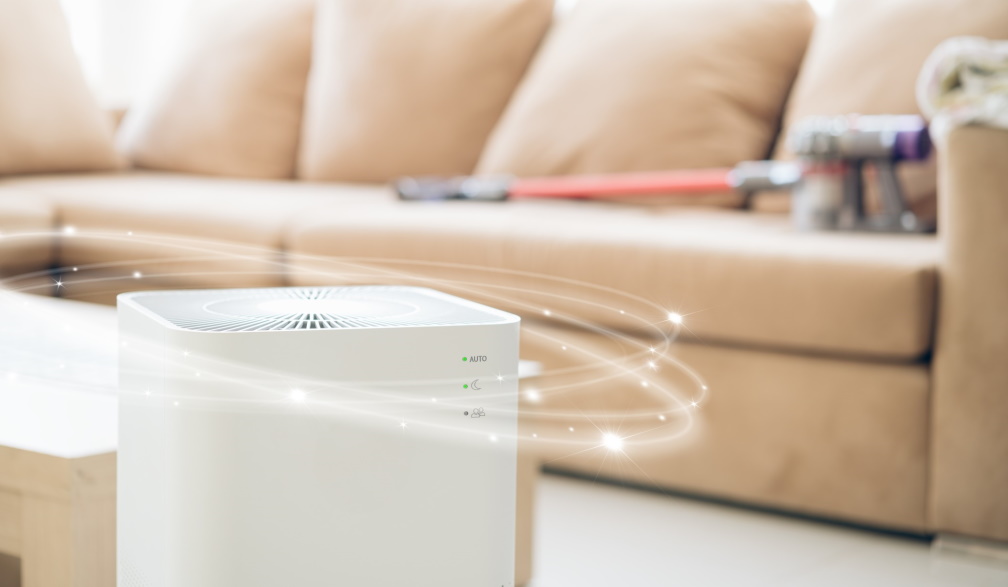The Truth About Air Purifiers & How They Improve Air Quality

Whether you have respiratory issues or not, poor indoor air can cause adverse effects on your health, especially in the long run. However, this is more detrimental for people suffering from various health complications.
Fortunately, most people don't have to live with poor air quality in their homes. Nowadays, you can easily purchase air purifiers to keep your family's health safe all the time. These devices efficiently trap and destroy harmful particles to maintain the air quality in any indoor space.
The reasoning behind air filters
Most air purifiers use fine sieves that sift the particles from the circulating air, causing various particles to get trapped. High-efficiency particulate air (HEPA) filters set the standard for air purifier filters with a 99.97% effectiveness against airborne particles with a size of at least 0.3 microns.
Although they appear invisible, harmful particles in the air may cause adverse effects to the body, potentially putting someone's health at risk. Air purifiers effectively trap various allergens and particles, such as dust, smoke, pollen and even pet dander.
What are the primary objectives of air purifiers?
Preventive measures against poor air condition
The best air purifier in Australia reduces the chances of harmful residues or allergens from spreading, preventing asthma and other allergy problems from occurring. An air purifier is an effective preventive measure that people can use at home or in closed spaces like salons, hotels or even shops. Depending on your device's performance, it can filter and treat different air volumes based on your room size.
Help alleviate allergies
One of the critical roles of air purifiers is to trap harmful particulates from the air inside an enclosed space. They use a complex filtration system that removes dirt and allergens from the air to help improve its quality.
An excellent part of an air cleaning system
Although air purifiers aren't an all-in-one solution to keep your indoor air clean, they can immensely help you improve your indoor air. In addition to regular vacuum cleaning, creating an effective strategy that centres around installing and maintaining air purifiers can help you keep your indoor air clean in the long run.
Help improve sleep
People with allergies know how it feels to have a runny nose for weeks, paired with frequent sneezing and coughing, ultimately disrupting your sleep. Allergy attacks can make it difficult for anyone to relax. Not only can they affect your productivity, but they can also affect your overall mood and energy level. Having an air purifier helps filter out those allergens and other tiny foreign particles even before they spread inside your home.
Eliminate nasty odour
No one wants to go inside an unpleasantly smelling home. The good thing is, one of the primary benefits of using an air purifier is that it gets rid of the indoor odours in any space. It can also remove volatile organic compounds found in paints and aerosol sprays, which could potentially harm your health.
Who needs an air purifier?
People with health conditions
Everyone needs clean indoor air, especially those with allergies and other respiratory issues like asthma. Getting an air purifier can help improve the air quality in any space, thereby reducing allergy and asthma attacks.
People who work indoors
Modern buildings use designs to ensure that every space available is energy-efficient. However, the air circulation tends to get compromised in return. Given that the area is airtight, barely any natural air flows in and out, trapping the pollutants inside. So, aside from regularly cleaning your space, installing an air purifier is a practical way to clean the air.
People who live or work near polluted areas
Some structures get exposed to various pollutants daily. Aside from vehicle exhausts, people who work in these buildings may also inhale construction contaminants and the chemicals coming from fresh paint. Having an air purifier installed can eliminate these harmful particles from the air inside as you work in the buildings.
How do various air purifier models work?
HEPA
An air purifier that uses a HEPA filter draws the air directly into the machine as it goes through the HEPA filter with its internal fans. Once that happens, the particles will get stuck inside the filter as they pass through it. The strained air then passes through the other side for you to inhale.
Activated carbon
Like HEPA, an activated carbon filter also draws the air directly through the filter to trap the pollutants. However, they differ in their components. Unlike HEPA filters, activated carbon filters have high porosity and trap pollutants more effectively.
Ioniser
Another air purifier model on the list is an ioniser. Although it doesn't use filters to clean the air, an ioniser emits negatively charged ions, which sticks to the particles to make them denser. Once that happens, the particles will be too heavy to float around, causing them to fall to the ground.
UV Light
UV light air purifiers also don't use filters to clean the air. Instead, they produce short-wave UV-C light to destroy airborne germs, such as harmful bacteria. The air that passes through the filter goes through the UV lamp, disinfecting the air.
The bottom line
Air purifiers utilise an internal filter system that captures dirt and other harmful particles to prevent them from circulating inside the area. They are an effective solution against poor air quality that has become relatively prevalent for the past couple of years.
You can find various air purifiers to help protect your family from harmful airborne pollutants. With an air purifier that suits your space, you will get to enjoy a cleaner and healthier air inside your home.





